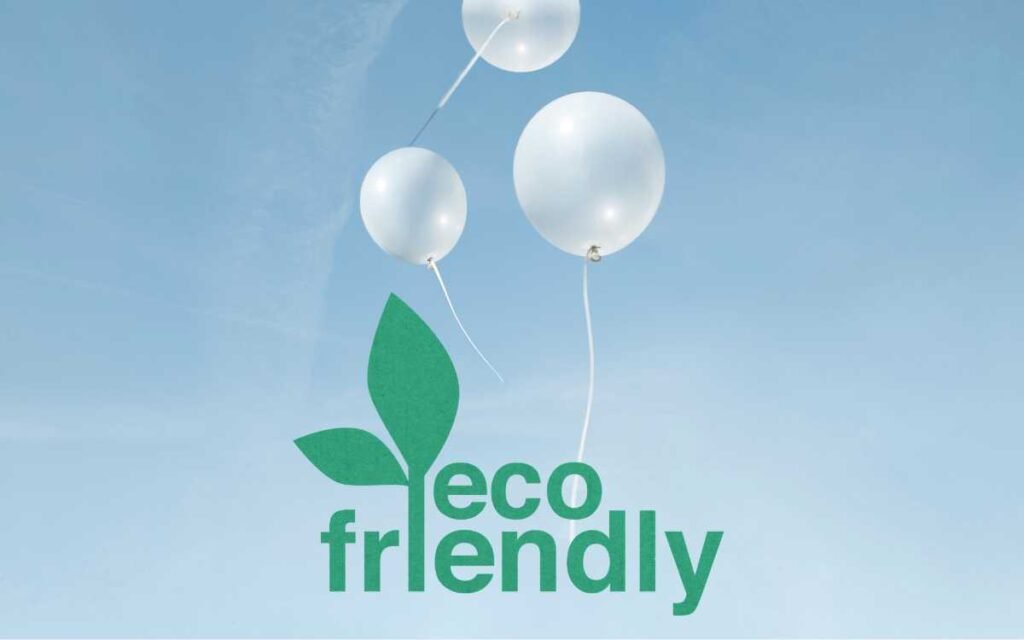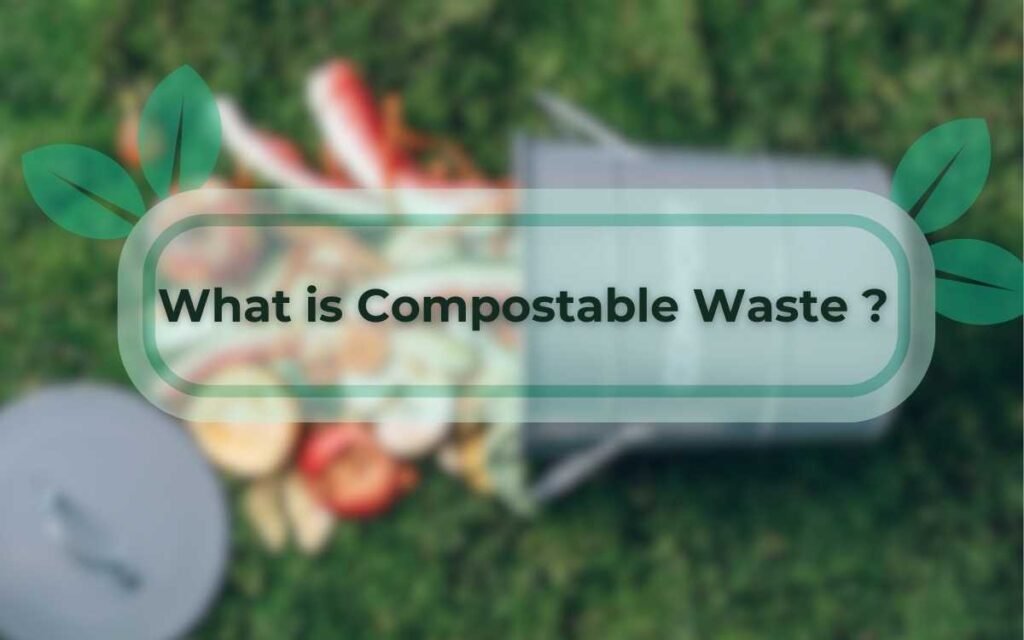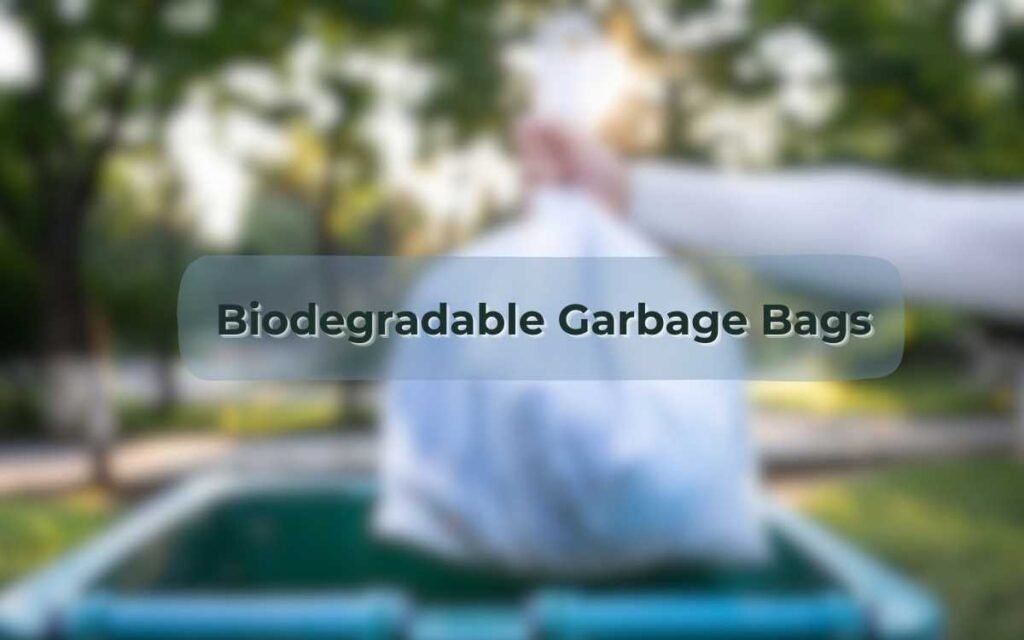
Introduction
When it comes to celebrations, balloons are often the go-to choice for adding a touch of festivity. As environmental concerns grow, many question balloons’ eco-friendliness. Are there truly eco-friendly balloons available, or are they a marketing myth? This blog will explore the environmental impact of different balloons. We’ll assess if any options are truly eco-friendly.
Are Balloons Eco-Friendly?

“Eco-friendly” describes products that are less harmful to the environment. When it comes to balloons, however, the reality is not as green as one might hope. Let’s delve into the different types of balloons and their environmental impacts.
Latex Balloons: The Not-So-Green Choice

Latex balloons are often called a more sustainable option than others. They are made from natural rubber latex, which is derived from the sap of rubber trees. This might sound promising, but let’s take a closer look.
- Degradation Issues: Although latex is a natural material, latex balloons are not as biodegradable as you might think. They break down very slowly in the environment. Latex balloons pollute our waterways, oceans, and landscapes like plastic does. Despite the claims, so-called biodegradable balloons do not decompose in a timely manner
- Wildlife Hazard: The environmental impact of latex balloons is particularly severe for wildlife. Dolphins, whales, turtles, fish, and seabirds often eat balloons, mistaking them for food. This has tragic consequences. More than 1,400 species are known to ingest and die from plastic and latex balloon pollution. The ingestion of balloons can cause severe gastrointestinal blockages, perforations, and malnutrition. In fact, according to IMAS balloons are #1 marine debris likely to kill in the sea than other plastics.
Foil Balloons: The Metallic Menace

Foil balloons, also known as Mylar balloons, are another popular choice for celebrations. These metallic-coated balloons are often mistaken for a greener option.
- Non-Biodegradable: Foil balloons are not biodegradable. They are made from materials that persist in landfills. They contribute to long-term waste. Like latex balloons, foil balloons also pose a risk to wildlife. They can be mistaken for food and cause harm if ingested
- Environmental Impact: Foil balloons are not sustainably produced. They add to the same pollution problems as latex balloons when they end up as litter. Their metallic coating makes them a problem. They are not easily recyclable and can persist in the environment for a long time.
Are Hot Air Balloons Eco-Friendly?

Hot air balloons offer a different kind of celebration. But how do they stack up in terms of environmental impact?
- Fuel Usage: Hot air balloons use propane to heat the air inside the balloon. Propane is less harmful than some fossil fuels. But, it is a non-renewable resource that adds to carbon emissions. Propane affects the environment. It’s less harmful than some fuels, but it still adds to the carbon footprint.
- Flight Impact: Hot air balloons pollute the air. They are not a sustainable transport. The impact includes the carbon footprint from the fuel used to heat the air inside the balloon. Hot air balloons emit pollutants that harm the environment (source: Environmental Protection Agency).
The Helium Issue: A Scarce Resource

Helium helps balloons float, but it has environmental and resource issues.
- Non-Renewable Resource: Helium is a by-product of the fossil fuel industry and is a non-renewable resource. There is a global helium shortage. It is critical for manufacturing and research. Helium’s limited supply and great importance mean it should not be used in consumer balloons.
- Impact on Supply: The helium shortage harms industries that rely on it for tech and medical uses. Using helium for balloons worsens the supply problem. It raises costs and strains resources in fields that need helium.
Eco-Friendly Alternatives: Are There Any?

If traditional balloons are not eco-friendly, are there any viable alternatives? Let’s explore some options.
Reusable Balloons
- Durable Materials: Reusable balloons made from tough materials can be inflated and deflated many times. This cuts waste and may be more sustainable than single-use balloons.
- Environmental Benefits: Reusable balloons cut waste from balloon use. They are a better choice for eco-friendly events. They help reduce environmental impact.
Plant-Based Balloons
- Innovative Materials: Some companies are developing balloons made from plant-based materials. These balloons are designed to decompose more quickly than traditional latex or foil balloons. While not perfect, they represent a step toward more sustainable practices.
- Decomposition: Plant-based balloons should break down faster than latex or foil ones. However, it’s important to ensure that they are disposed of properly to fully realize their environmental benefits.
Paper Balloons
- Recycled Materials: Paper balloons made from recycled paper may be more eco-friendly. They’re an alternative to regular ones. They are biodegradable and can decompose more naturally than plastic or foil options.
- Disposal: Even though paper balloons are a more sustainable option, they still need to be managed carefully to avoid littering. Proper disposal or recycling is crucial to minimizing their environmental impact.
DIY Solutions: Creative and Sustainable

If you’re looking for ways to celebrate without balloons, consider these DIY alternatives:
- Homemade Decorations: Use fabric, paper, or edible items to make your own decorations. This approach cuts waste. It allows for creativity, without the environmental harm of balloons.
- Edible Decorations: Use edible items such as fruits, cookies, or candies as part of your celebration decor. Not only are these options fun and unique, but they also have the advantage of being completely biodegradable.
Bottom Line
In conclusion, balloons are popular for celebrations. But, traditional latex and foil balloons are not eco-friendly. They contribute to environmental pollution and pose risks to wildlife. Helium, used to make balloons float, is also a non-renewable resource in short supply.
If you’re worried about balloons’ environmental impact, choose reusable or plant-based options. You could also try DIY decoration ideas. By making more sustainable choices, you can enjoy your celebrations while also taking care of our planet.
Remember, every small step toward sustainability helps make a big difference. Let’s choose wisely and celebrate in ways that are kinder to our environment. Use reusable decorations or plant-based options. You can make your celebrations joyful and eco-friendly.





